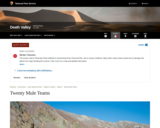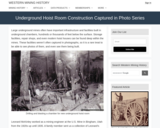
This single instrumental qualitative case study explores and thickly describes job performance outcomes based upon the manner in which self-directed learning activities of a purposefully selected sample of 3 construction managers are conducted, mediated by the use of Web 2.0 technology. The data collected revealed that construction managers are concerned with the performance expected of them, in addition to how well they perform their work-related activities (orientation to learning), indicating that organizations should provide guidelines on the use and expected outcomes of self-directed learning in addition to providing the tools, resources, and time (environmental factors) to match performance needs; construction managers feel that work-related activities expected of them, how well the work-related activities are performed, and consequences for poor performance at work are determining factors in selecting Web 2.0 technologies; while construction managers understand the need for rules restricting the use of Web 2.0 technologies in performing their jobs, they feel these rules do hinder their performance because access to specific information they need to answer a question, solve a problem, or research to learn something new is sometimes restricted; and successful performance outcomes are determined by compliance to expected performance behaviors of others, such as answering a question or solving a problem an architect or superintendent have presented, as well as expectations construction managers have set for themselves. The following are appended: (1) Call for Participation--Web 2.0 Technology Project; (2) Informed Consent Letter and Form/Template; (3) Semistructured Interview Guide; and (4) Permission to Conduct Research Study.
- Subject:
- Business and Communication
- Career and Technical Education
- Education
- Electronic Technology
- Management
- Material Type:
- Case Study
- Author:
- Caruso Shirley J
- Date Added:
- 05/11/2023

